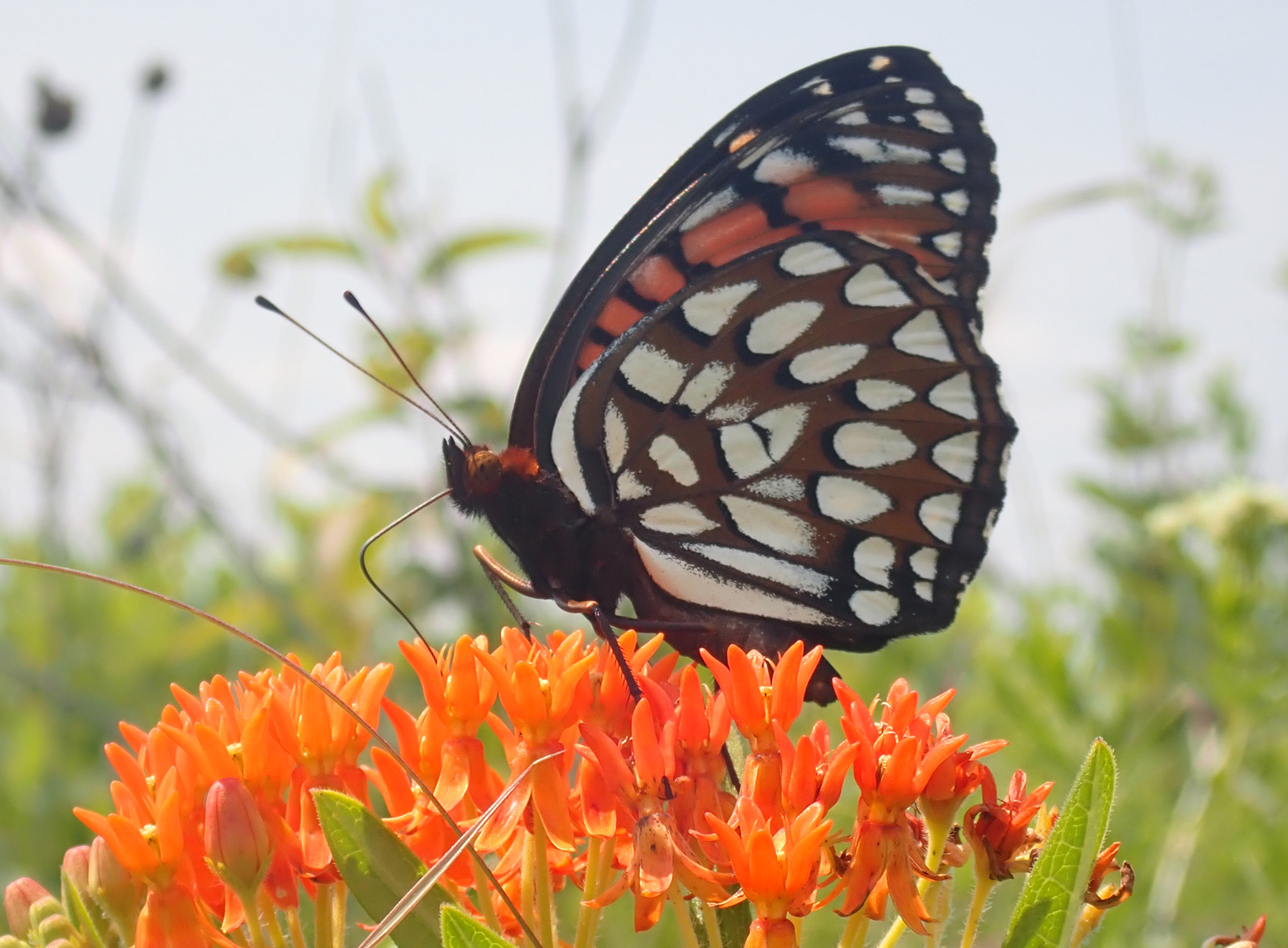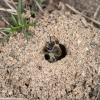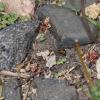Here in Oklahoma, as in much of North America, Native Americans have been burning the land in a controlled fashion for thousands of years. They use it as a tool for dozens of purposes, including providing better forage for bison and other livestock and increasing harvests of seeds, berries, and other traditional foods. Therefore, I felt honored this spring when the nonprofit Tribal Alliance for Pollinators (TAP) invited me to create and deliver a webinar on the effects of prescribed burning (aka controlled burning) on pollinators. TAP is based in eastern Oklahoma but it provides technical support to tribes throughout North America, helping them preserve imperiled pollinators and the native plants that pollinators and people depend on for sustenance.

Fire has been used to manage prairies for centuries, and remains an important tool used by grassland managers to maintain plant diversity. (Photo: Krista Lundgren, USFWS.)
I first became interested in prescribed burning as a new grad student at the University of Florida in fall 1991, when twenty classmates and I were bussed to a nearby forest. Our professor gave us drip torches and hand tools and taught us to burn the forest in a controlled manner that would remove the dead plant materials on or near the ground but leave the longleaf pine trees unharmed. This professor and others taught me the importance of prescribed burning for maintenance of healthy ecosystems and I became fascinated with wildland fire. However, as a young butterfly ecologist, I was curious: how would prescribed fire impact butterflies?
In 2006, I finally got the opportunity to satiate that curiosity firsthand when I studied the impacts of prescribed fire and cattle grazing on regal fritillary butterflies in Missouri. Multiple researchers had published findings showing that regal fritillary larvae and pupae, which live in grasslands, were highly vulnerable to direct effects of fire (they got incinerated). While my research did not examine direct effects, I found that regal fritillaries recolonized recently burned area within a few months of a burn, as long as there were large amounts of habitat nearby that was not burned that year.

The author studied the effects of burning prairies on the regal fritillary. He found that they readily recolonized burned areas to use the improved habitat. This regal fritillary is drinking nectar from butterfly milkweed. (Photo: Katie Lamke.)
Of course, there are thousands of species of pollinators in North America. How does prescribed fire impact each of them? It will be many years before all species can be studied, but the research performed thus far has taught us some general principles. Prescribed fire is indeed a great tool for reducing woody plant encroachment in grasslands and for maintaining for open forests and woodlands. Fire also tends to increase flower production of key nectar and pollen sources. However, burning entire landscapes is problematic for pollinators, as it can take years for some pollinator species to recolonize after landscape-scale burns.
I’m so convinced of the importance of prescribed fire for pollinator habitat in Oklahoma grasslands that I have convinced my family to help me conduct prescribed burns on our 10-acre farm (see below for a photo sequence). Thus far, we have conducted eleven small burns—each one a fraction of an acre—that have been quite safe and have accomplished our ecological goals. We hope to conduct larger burns with help from our local Prescribed Burn Association.

To maintain the abundance and diversity of flowers, a prairie needs to be managed. Flowering late in the summer, this patch of tickseed sunflower provides nectar for migrating monarchs on the author’s farm. (Photo: Ray Moranz.)
If you are interested in prescribed fire for your land, be sure to learn plenty about it first. Most importantly, learn the laws about prescribed burning where you live! For more info on how to conduct prescribed burning and how it affects pollinators, please consider using the following resources:
- Rangeland Management and Pollinators: A Guide for Producers in the Great Plains
- Best Management Practices for Pollinators on Western Rangelands
- An interactive map of Prescribed Burn Associations
- Your local Natural Resources Conservation Service (NRCS) field office
The following sequence of photos shows the rapid benefits from burning prairie. This was a small project done this year on the author’s own farm in Oklahoma. The first photo shows the fire burning during early April. The second photo shows the land in late May, seven weeks after the fire, with vibrant regrowth of grasses and flowers (this is taken from the other direction; note the bluebird house that appears in all three photos). The third photo was taken in early August, four months after the fire. The prairie is now ablaze with yellow flowers. (All photos: Ray Moranz.)
Further Reading
Read more about Managing Natural Lands for Pollinators
Find plant lists, habitat management guidance, and much more in the Pollinator Conservation Resource Center
Learn more about the Xerces Society’s Pollinator Conservation Program.
Find out how you can help Bring Back the Pollinators.




